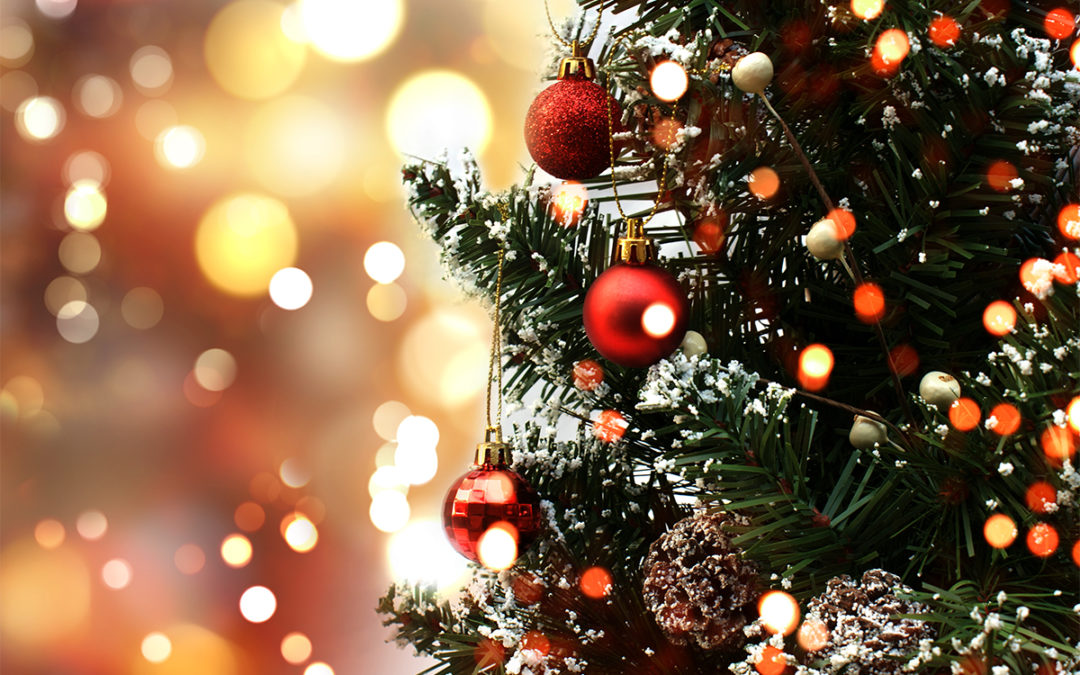Usually the holiday season means spending time with loved ones, lots of food and festive gatherings. For many people however it can have a whole other association – allergies. While December can bring about the common cold and flu – which means sneezing, coughing, stuffy noses and watery eyes – but people also seem to notice these symptoms around Christmas trees and other greenery decor. “Christmas tree allergies” are a common belief. But is it a real occurrence? In this blog we’ll take a look at some of the potential reasons for why Christmas arrangements can bring out respiratory symptoms and tips for how to make breathing easier this holiday season.
Can you be allergic to your Christmas tree?
Perhaps you’ve wondered if your beautiful, live Christmas tree that you’ve just set up and decorated in your house is the cause for all of your new allergy symptoms that have just appeared. It’s probably pine pollen, right? This would be a good guess because pine pollen can indeed be an allergy. However, unless you’re putting your tree up in March or April then it isn’t the cause, because pine pollen is only produced in the spring when the trees reproduce. This is why pine tree allergies and “Christmas tree allergies” are considered two separate conditions.
So if it isn’t a pine pollen allergy, then what is the culprit? The answer may not be as simple as one thing. Your tree might contain one or more of these allergens:
Dust mites and insect debris
Dust and insect debris can easily accumulate on both real or fake trees by gathering in the crevices in the branches. By moving or even decorating you can stir up those allergens which causes symptoms.
Tree sap
If you keep suffering from an itchy rash on your skin, then you may be allergic to the tree sap. Or more specifically, a component of the sticky sap called colophony or rosin which causes a rash similar to the one from poison ivy. This typically appears one or two days after contact with the tree.
Mold spores
A 2011 study published in the Annals of Allergy, Asthma and Immunology, researchers found more than 50 kinds of mold from tested samples on 28 different Christmas trees. 34 of these classified as potential allergens. And even your artificial tree is susceptible to mold if it’s stored in humid or damp places, like a garage, basement or attic.
Weed pollen
Weeds reproduce in the fall, causing to be floating through the air by the time pine trees are cut down to be sold.
Chemical spray
Some Christmas tree farms have been known to spray their tree with chemicals like pesticides. These can easily cause skin and eye irritations, and fake snow spray and can cause allergy symptoms in people.
Terpenes and pinenes
That signature, festive pine small that we know and love so much? That is created by terpenes and pinenes, and unfortunately some people can be allergic to this scent.
How to deal with Christmas tree allergies
The good news is that you don’t need to give up a holiday tradition to ease your allergy symptoms this season. No matter which allergy trigger you’re experiencing, there are measures you can take to help minimize or prevent an allergen exposure. Besides buying a fake tree, here are a few other solutions:
Shake your tree
Give your Christmas tree a good shake before you bring it into your home. This helps dislodge some of the pollen and dust that might have settled on branches. Be sure to wear a face mask so you don’t inhale them while they’re loose!
Hose your tree
Hosing your tree off is a good way to wash off any dust, mold or other allergens. It also clears any lingering dirt to make it squeaky clean for decorating. If you do hose it, give it time to completely dry off before bringing it inside to prevent mold growth.
Blow off your tree
If the thought using a hose in the Chicago cold doesn’t sound fun, a leaf blower is an excellent alternative and can help you get even more dust and pollen off of your tree. You could also use an air compressor or vacuum.
Protect your skin
If you have the above mentioned tree sap allergy and sensitive skin, you might consider wearing gloves and/or long sleeves while you move and decorate your tree. Be sure to change clothes immediately after you are finished so you don’t spread the allergens around your home.
Protect your air
Remove allergens from your indoor air by moving an air purifier to the room with your Christmas tree. A traditional air filter can remove matter like dust and mold by trapping the particles on a filter surface.
The holidays should bring up feelings of festivity and excitement, not feelings of dread about suffering through allergy symptoms. By following a few precautions, you can enjoy your holiday season no matter what decor or arrangements you choose.





